Trade Aid Round Two: A Per-Acre Perspective
TOPICS
Wheat
photo credit: Getty Images
John Newton, Ph.D.
Former AFBF Economist
In July the administration authorized up to $12 billion to fund several programs designed to assist farmers and ranchers impacted by the retaliatory tariffs imposed by some of our largest agricultural trading partners, like China, Mexico and Canada. These programs include a direct payment market facilitation program, a trade mitigation food purchase and distribution program and a trade promotion program. Recently the administration announced the details, including, most importantly, the initial payment rates for the market facilitation program (Trade Aid Round One: A State Perspective).
For field crops, the market facilitation program payment rates -- paid on 50 percent of 2018 production -- were announced at $1.65 per bushel for soybeans, 6 cents per pound for cotton, 86 cents per bushel for sorghum, 14 cents per bushel of wheat and 1 cent per bushel for corn. Initial market facilitation program payments are expected to be $3.6 billion for soybeans, $277 million for cotton, $157 million for grain sorghum, $119 million for wheat and $96,000 for corn.
Using the initial payment rate on 50 percent of production, along with the 2018/19 marketing year average price from USDA’s September World Agricultural Supply and Demand Estimates, the market facilitation program payments as a percent of the crop price are highest for sorghum, soybeans and cotton, followed by wheat and corn, Figure 1.
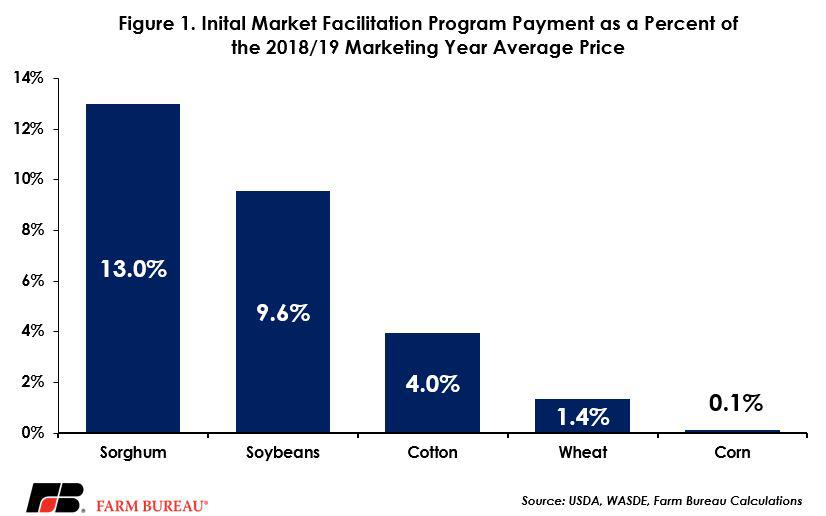
Payments Per Acre
To determine the market facilitation program payment rates, USDA estimated the gross trade damages by modeling bilateral trade flows with and without the imposition of retaliatory tariffs. The difference in trade flows was then divided by 2017 crop year production data to determine the payment rate per bushel. The total payment rate to the grower is the product of the payment rate per bushel and 2018 production, subject to a payment limitation of $125,000.
More productive land would be expected to yield a larger crop, making those growers’ profitability more vulnerable to the impact of retaliatory tariffs. It follows then that growers with higher per-acre yields would see larger market facilitation program payments. However, one important factor that determines crop yields but is outside the control of the farmer is Mother Nature. Delivering too little rain in one region or hotter than normal temperatures in another, she can be a temperamental business partner.
Facing some of the poorest growing conditions in decades, winter wheat growers in many states are expected to have below-trend wheat yields in 2018. Similarly, drought conditions in the Southwest resulted in below-trend yields for a majority of sorghum-producing states. Finally, while corn growers in the Midwest, where a majority of the crop is grown, will likely contribute heavily to what is expected to be a record-large crop, corn growers in the South, Southwest and West experienced very poor growing conditions and will have below-trend crop yields in 2018.
Growers in these states will have lower-than-anticipated crop revenues due to smaller yields in combination with trade-related price declines and record harvests elsewhere around the country. For these growers, crop insurance and Title I farm programs may help to offset some of the revenue declines, but their situation also highlights the challenges of equitably administering the market facilitation program.
While some growers will see lower market facilitation program payments due to low crop yields, record or near-record U.S. crop yields are currently projected for corn, soybeans and cotton in 2018. In 13 out of 33 states, and 10 out of 29 states, corn and soybean yields will be record-high, respectively. Additionally, relative to a linear (unconditional) trend yield, 22 corn states, all but one cotton-producing state and all but one soybean-producing state will have 2018 yields above their long-run trend. For these growers, the market facilitation program payments, as well as more favorable crop yields, help to offset the trade-related damage to farm profitability. Lower harvest prices will also increase the probability of crop insurance indemnification – providing another benefit to these growers.
Figures 2 through 6 highlight potential average market facilitation program payments per acre based on 2018/19 crop yields and one-half of the market facilitation program payment rate for soybeans, corn, wheat, sorghum and cotton.
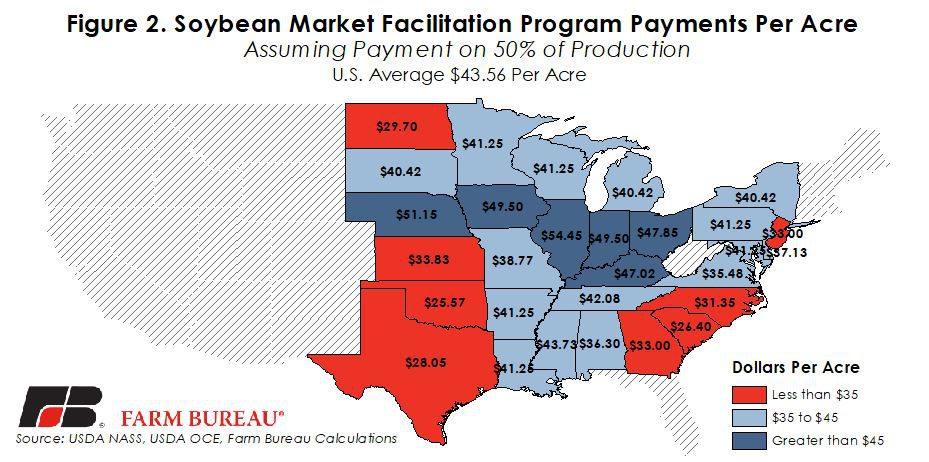
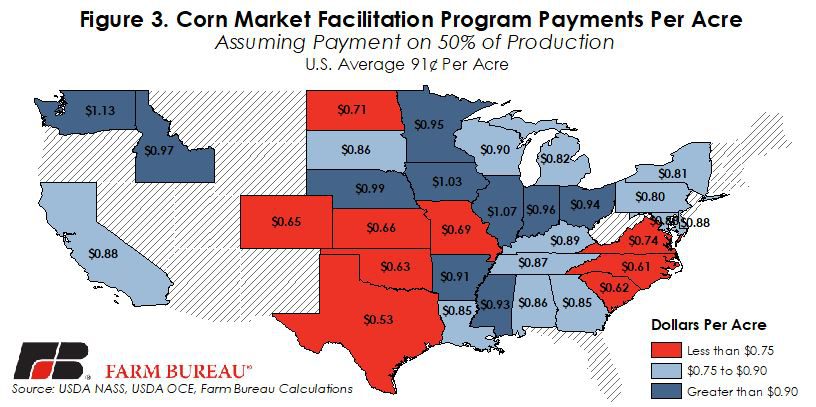
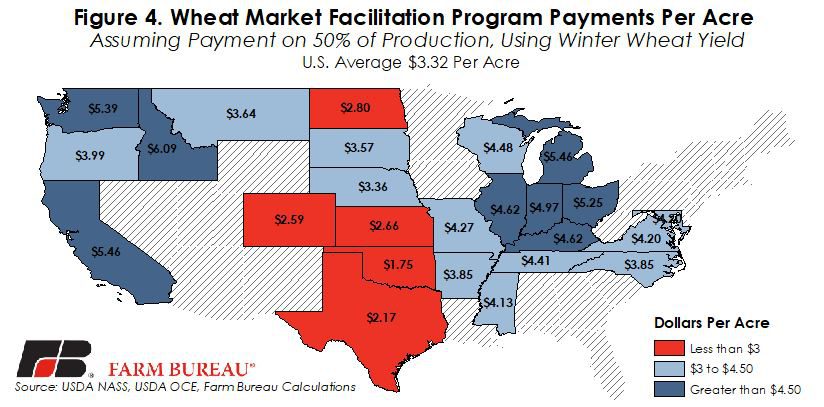
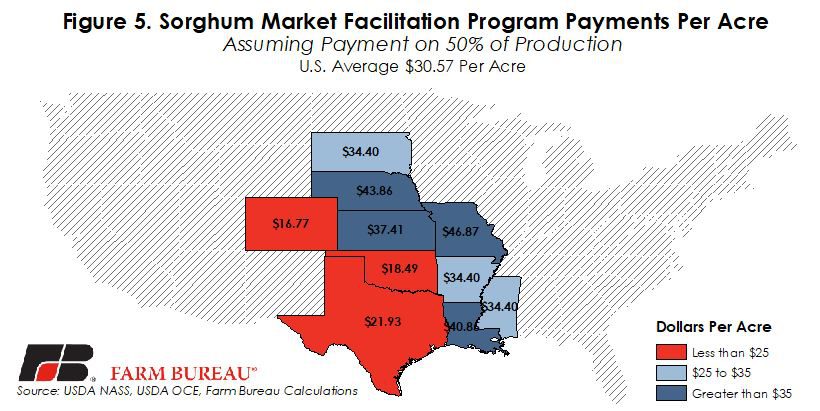
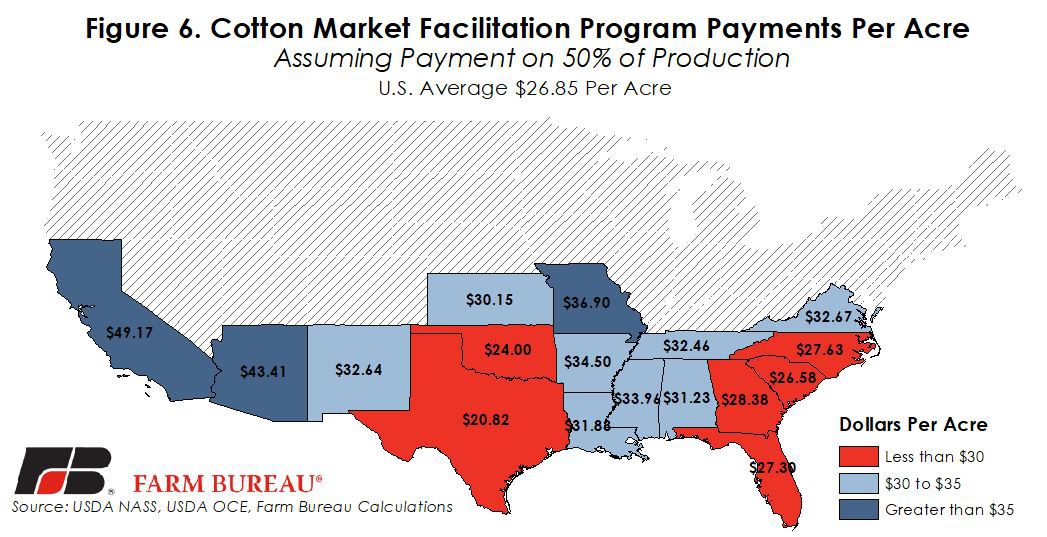
Summary
The administration is prepared to deliver an initial total payment of $4.7 billion to soybean, sorghum, cotton, wheat, corn, hog and dairy farmers. Producers can sign up with their Farm Service Agency office through Jan. 15, 2019 (USDA Launches Trade Mitigation Programs).
While the market facilitation program payments provide much-needed financial relief to some growers, because they are not decoupled from production, farmers with more favorable crop yields will receive higher per-acre program payments and farmers with lower yields will receive less. For growers in both categories, crop insurance and Title I commodity support programs will also work to offset crop losses and harvest-time or marketing year average revenue declines.
Importantly, for all of these producers, final crop returns will be determined not only by the market facilitation program payments, farm bill programs and crop insurance, but also on pre- and post-harvest risk management and marketing strategies.
Trending Topics
VIEW ALL